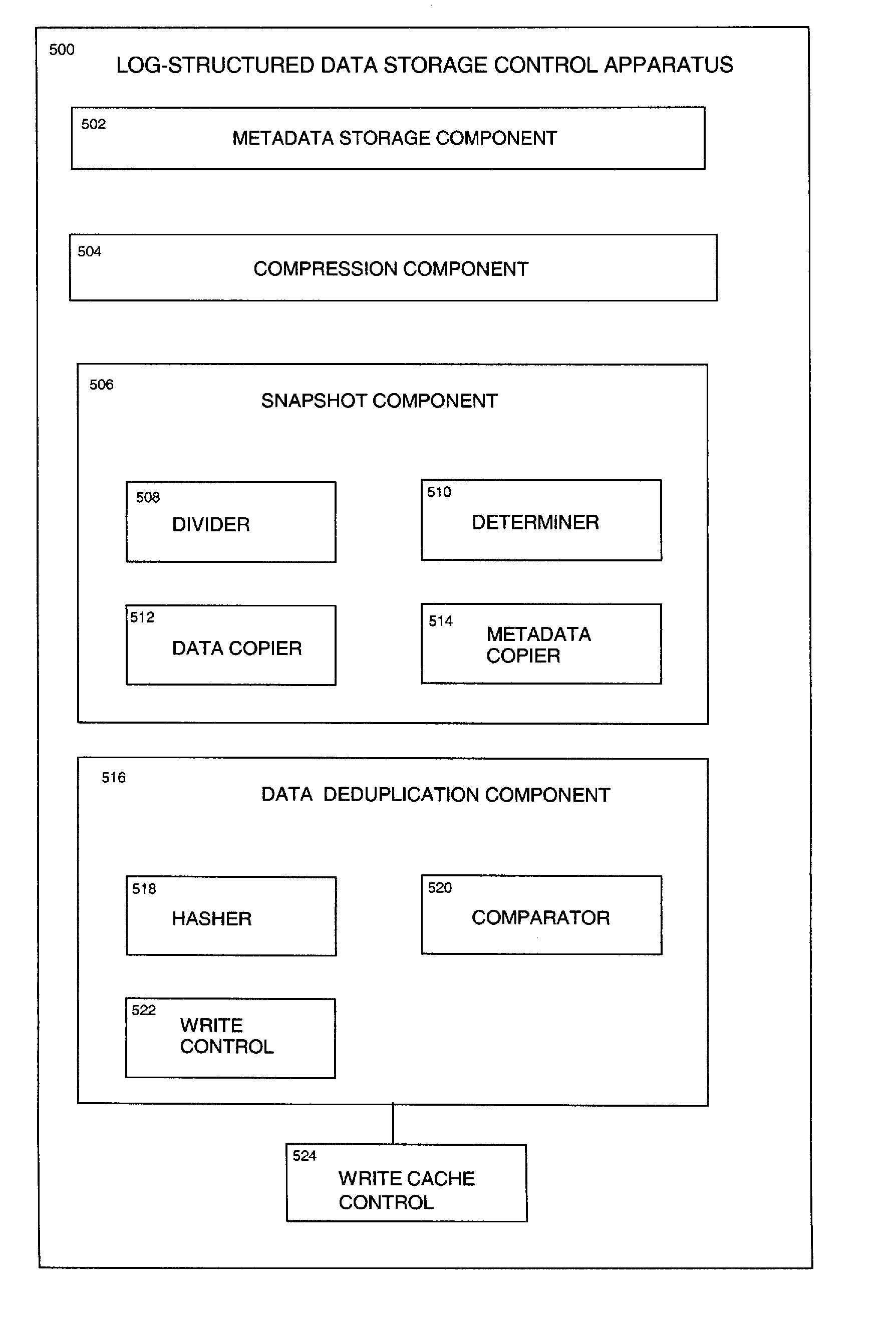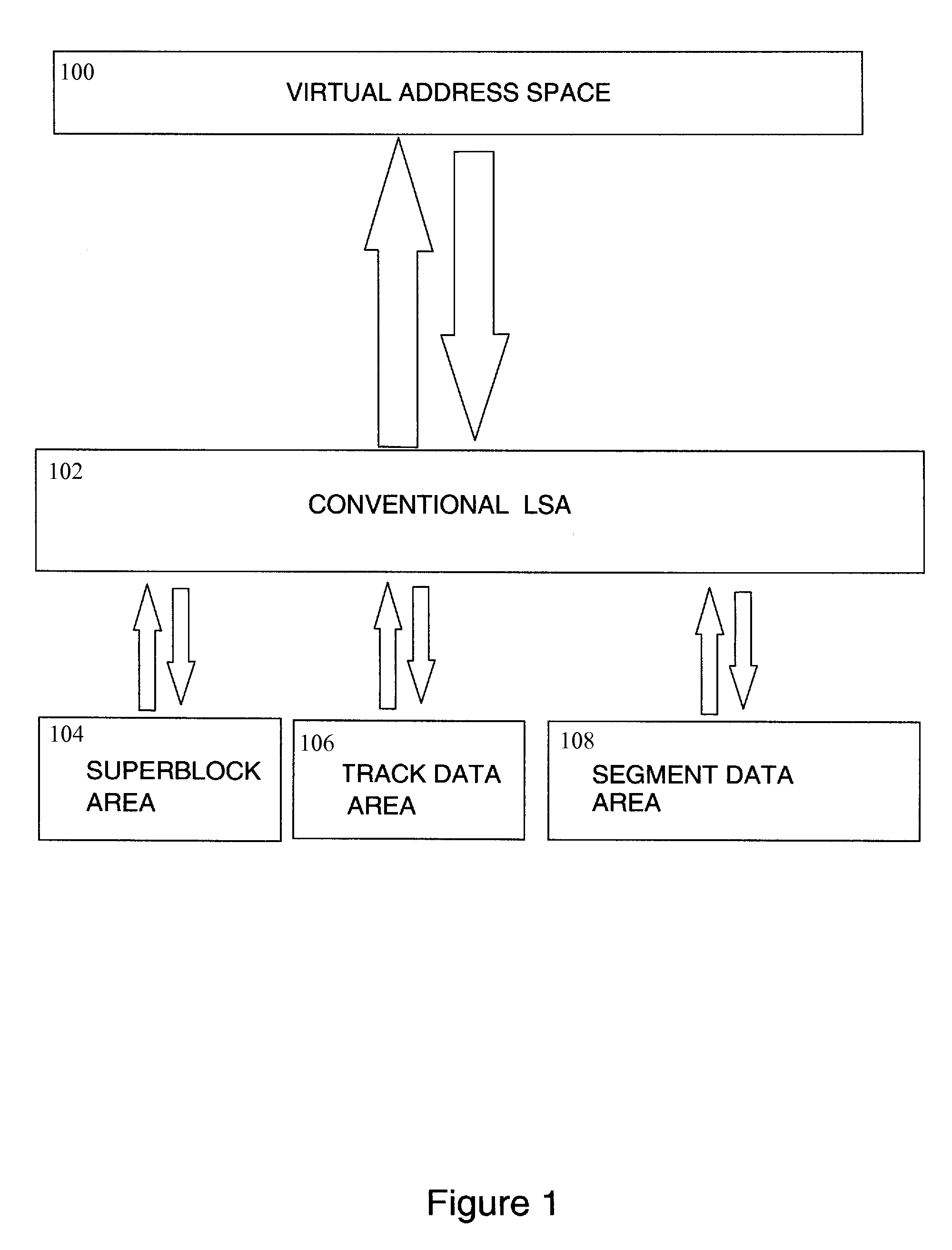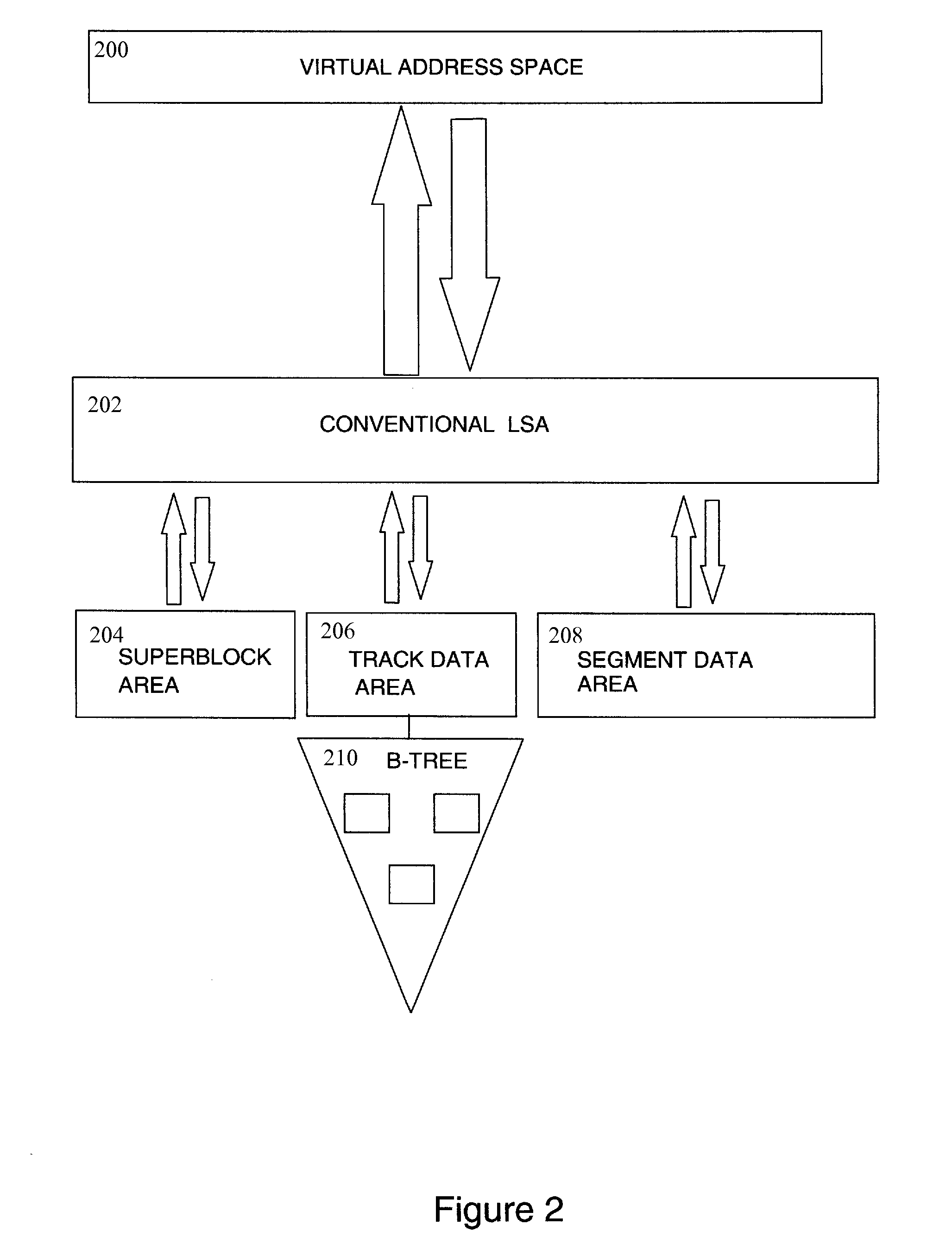Apparatus and method for managing data storage
a data storage and log structure technology, applied in the field of logstructured data storage management, can solve the problems of not being able to preserve the snapshot in the backup extent, not being able to make use of both the feature and the take, and not being able to take snapshots, etc., to achieve the effect of improving the characteristics of the new lsa, scalability, snapshot performance and metadata writing efficiency, and improving the quality of data storag
- Summary
- Abstract
- Description
- Claims
- Application Information
AI Technical Summary
Benefits of technology
Problems solved by technology
Method used
Image
Examples
Embodiment Construction
[0054]A preferred embodiment of the present invention will now be described, with reference to the figures. As described above, FIG. 1 depicts an arrangement or apparatus according to the prior art. This has been described above as forming the background to the present invention.
[0055]A conventional LSA as shown in FIG. 1 has underlying physical storage for some kind of superblock (call this the superblock area 104), for its metadata stored in metadata tracks (call this the track data area 106) and for the customer data stored in segments (call this the segment data area 108). Using this underlying physical storage, the LSA provides a very large virtual address space 100 which can be sparsely populated and which supports snapshot operations.
[0056]Now, the scalability problem outlined above (the “second significant problem”) is that to support a very large virtual address space, the track data area has to be quite large (about 1000th as big as the virtual address space) so if a syste...
PUM
 Login to View More
Login to View More Abstract
Description
Claims
Application Information
 Login to View More
Login to View More - R&D
- Intellectual Property
- Life Sciences
- Materials
- Tech Scout
- Unparalleled Data Quality
- Higher Quality Content
- 60% Fewer Hallucinations
Browse by: Latest US Patents, China's latest patents, Technical Efficacy Thesaurus, Application Domain, Technology Topic, Popular Technical Reports.
© 2025 PatSnap. All rights reserved.Legal|Privacy policy|Modern Slavery Act Transparency Statement|Sitemap|About US| Contact US: help@patsnap.com



